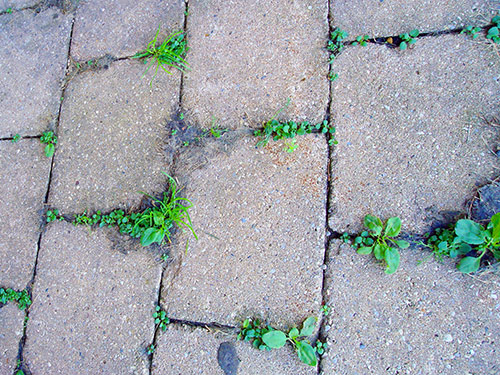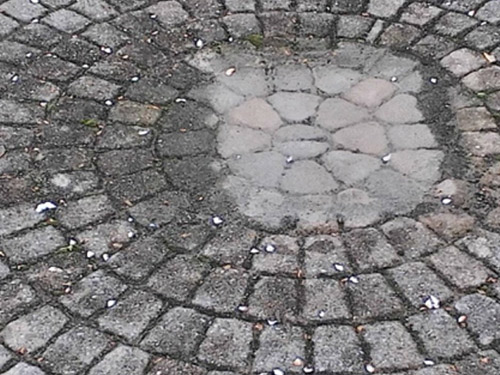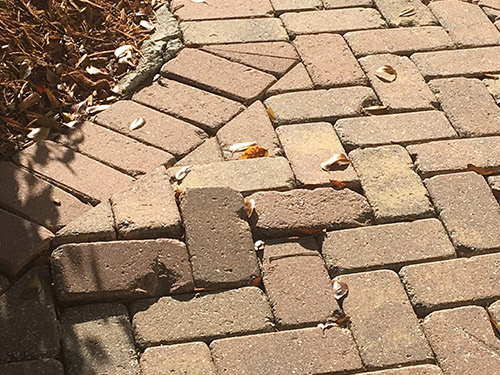Does Your Patio or Walkway Look Like This? Need a Facelift?
Let Us Clean, Restore & Protect Your Brick Pavers So That Your Investment Looks Great Again



We will clean and revitalize your paver project to enhance it’s appearance and protect it from the potential future damage.
What causes this to occur?
During installation, sand was swept into the joints between the pavers. Due to natural causes, that sand can settle or erode. This causes newly formed spaces and crevices on and between your paver surfaces. Airborne seeds and debris blow around and drop to the paver surface. They find their way into a crevice where they can germinate and begin to grow and spread quickly. Weeds in your pavers are not just unsightly, but will eventually cause structural damage to the patio or walkway. De-weeding, cleaning and re-sanding your pavers will do more that provide you with a more visually appealing walkway or patio. It will also restore and protect it.
Repair Rates
$85 per person for the first hour, $50 per hour per person after. Materials extra.
How Is This Done?
CLEANING
Weeds, grass, and other unwanted growth will be removed from the pavers. The complete surface of the pavers, including crevices and spaces, will be throughly cleaned. It is possible for this to be done by hand, but the most effective means to do this is by power washing. This ensures that all crevices and spaces wil be free of unwanted contaminants. Water alone will usually be enough to clean the surface; however, for thicker dirt build up or mild stains it will be beneficial to use a gentle detergent. At times, the use of a specialty cleaner that targets the removal of rust, oil, deep stains, and efflorescence may be required. Pavers should be allowed to dry for 1-2 days.
RESTORING
Restoration will begin once the pavers are completely clean and dry. This entails repairing and existing flaws or damage, such as repairing settled or uneven pavers, replacing cracked or broken pavers, re-aligning borders and re-isntalling edge supports. It is imperative to install new joint filter, in order to preserve the structure of the paver project. Polymeric sand is typically the filler that is used, is generously and swept over the entire surface in order to fill in the empty spaces and crevices. The sand is then tightly compacted using a heavy-duty machine across the entire surface. To ensure all spaces are filled completely, this process is repeated again. The entire surface is swept, followed by the use of blower remove any fine particles of sand remaining on the surface. The surface is the sprayed down gently with water until the sand becomed saturated. The sand should be allowed a minimum of 2 hours to dry.
PROTECTING
After all repairs have been made and new sand has been installed, a protective layer will be applied to the surface. This will preserve cleanliness of the pavers for a longer period of time as well as protect the surface from settling and eroding that can occur over time.
There are two types of sealers to choose from; film forming and invisible penetrating. Film forming sealers can be clear or can provide some darkening/development of color with a low-gloss look. Invisible penetrating sealers do not change the appearance of the pavers. Both provide a water-resistant finish and protect against stains, chemicals, and water/salt absorption. Deciding between the two will depend on your personal preference for cosmetic appearance. In addition to being applied to restorations, sealers can also be applied to new installations. It is recommended, though, to wait six to twelve months prior to applying sealers in order to allow new pavers time to completely cure. It is recommended to wait at least two years from the original date of sealing to re-seal a paver project. The ideal time to re-seal is every 3-5 years.